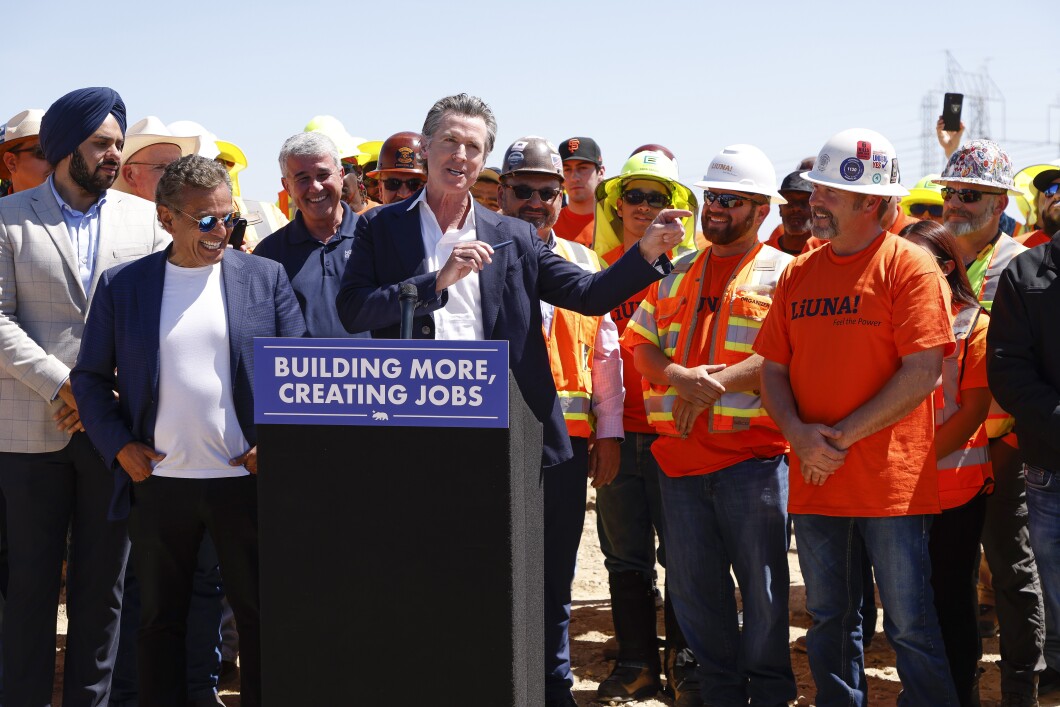
Gov. Gavin Newsom (D-CA) is seeking to have California directly purchase power generated by renewable sources, such as geothermal and offshore wind, to prevent blackouts as he aims to phase out fossil fuels rapidly.
Newsom’s plan hopes to solve the competing challenges of meeting growing electricity demand while pursuing his aggressive climate change targets and improving electric reliability in a state plagued by the threat of rolling blackouts in recent years.
EVERY HOUSE MEMBER WHO VOTED AGAINST PASSING THE DEBT CEILING BILL
California has some of the most ambitious greenhouse gas emissions targets in the nation, aiming to reach 100% clean electricity by 2045, and has run up against a wall during extreme heat or wildfire events that in some cases have led to outages. The tight margins mean the state needs new generating capacity, but it doesn’t want to turn to just any source.
The state’s policies strongly disfavor fossil fuels compared to carbon-free sources, and the governor’s office estimated California will have to install 148,000 megawatts of new clean power by 2045 to meet its climate goals, up from 35,000 MW now.
Those resources can be built more cheaply now with help from federal subsidies boosted by the Inflation Reduction Act, but significant barriers remain, according to an updated clean energy plan from Newsom’s office, which proposes the development of a “central procurement mechanism” to create demand and finance new renewable energy projects.
Under the proposal, the state would buy the power produced from renewable sources, and ratepayers would be charged, according to the Associated Press.

Project development complexities and market fragmentation among sellers “have failed to result in significant procurement of certain diverse resources,” Newsom’s plan said.
“A central procurement mechanism combining the buying power of customers could cost-effectively procure these types of resources, with the resulting benefits spread among all customers,” it added.
California already has significant renewable energy resources, leading all other states in solar generating capacity. Newsom’s plan would focus on developing offshore wind and geothermal resources and battery storage projects.
The state also generates more power from geothermal power plants, which use subterranean heat to generate carbon-free electricity, than any other state, but geothermal is a small sliver of total generation.
Offshore wind, meanwhile, is still in its very early stages off the Pacific Coast. The Bureau of Ocean Energy Management only just held its first wind lease sale in federal waters offshore California in December, and the leases cover deep water blocks requiring the use of floating turbines, a more nascent and expensive technology than used in projects under development in the Atlantic.
“These electric resources often have lengthy development timelines due to the unique and complex permitting, interconnection, and construction requirements,” Newsom’s plan said. “In addition, these resources are typically the most expensive, more complicated, and larger than other electric resources that do not possess the same types of characteristics, attributes, and profiles needed for our future clean and reliable grid.”
Congress is actively debating whether to pass legislation that enables more rapid development of renewable energy over traditional resources, as California and the Biden administration favor, or whether to support more traditional energy by ordering more leasing for fossil fuels on federal lands and reducing regulations for fossil fuel-fired power plants.
Additions of renewable power generation are outpacing new fossil fuel-fired plants as they become cheaper and as utilities retire coal- and gas-fired plants to reduce their emissions or avoid regulatory costs.
CLICK HERE TO READ MORE FROM THE WASHINGTON EXAMINER
At the same time, the bulk power system faces protracted grid reliability problems, which the nation’s grid watchdog has blamed on an imbalance between additions and retirements.
Jim Robb, CEO of the North American Electric Reliability Corporation, said during a congressional hearing Thursday that the pace of coal retirements is “disorderly,” threatening grid reliability.





